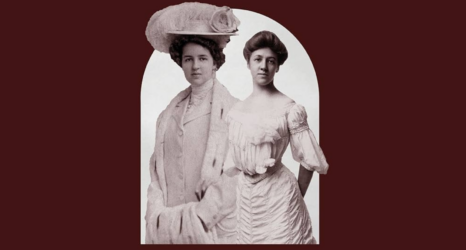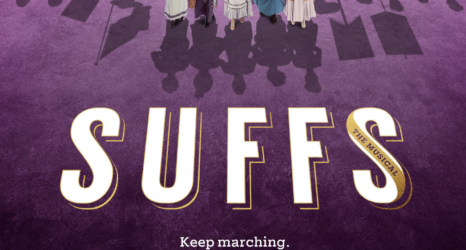In honor of Women’s History Month, I’m authoring a “this day in feminist history” post in you-are-there fashion throughout March.
March 3, 1913: Any doubts about the courage, dedication or organizational skills of suffragists must certainly now lie discarded along Pennsylvania Ave. in Washington, D.C.
Had today’s massive suffrage parade and pageant been carried out on a quiet street and with ample police protection, it would still have been an incredible feat. But when the National American Woman Suffrage Association and the event’s chief organizers, Alice Paul and Lucy Burns, successfully pulled off today’s spectacle despite every imaginable obstacle, they proved that the late Susan B. Anthony was right when she predicted that “failure is impossible” for woman suffrage.
More than 5,000 costumed marchers from all 48 states, and other nations as well, plus 26 floats, 10 bands, 6 golden chariots and numerous equestrian squads supported the cause of “Votes for Women.” But soon after the march began at the Peace Monument and turned down Pennsylvania Ave., marchers encountered an unruly mob. Nonetheless, the suffragists fought their way, foot by foot, toward the Treasury Building amid the raucous crowd of over 500,000–many drawn to the city for President-elect Woodrow Wilson’s inaugural tomorrow.
So great was the battle that it took an hour to march the first ten blocks. At times, for as far as the eye could see, there was nothing but a solid mass of people between the buildings lining Pennsylvania Ave. The few police assigned to crowd control either had no interest in doing their duty or knew they were hopelessly outnumbered and simply gave up. But the suffragists kept their tempers amidst the harassment, and like a well-disciplined army steadily advanced.
The parade was an organizational triumph, with separate sections vividly illustrating each point suffragists wished to make about The Cause. “Women of the World, Unite” was the banner that led women representing countries where they can presently vote. Another section saluted women’s progress over more then seven decades. A thousand college women paraded together under their school banners, while others portrayed women in various occupations. There were club women, clergywomen, State delegations and pro-suffrage members of Congress in the line of march as well.
There was cheering even amid the heckling and disruptions, the biggest ovation of the day going to General Rosalie Jones [PDF] and her suffragist “Army of the Hudson” that hiked here from Newark, N.J.. But the parade was only one part of the spectacle: At the other end of the marchers’ route, a colorful pageant was taking place on the steps of the Treasury Building. While their sisters fought rowdy crowds, the performers’ courage was tested by the cold weather, as they wore thin costumes for an allegory about women striving for equality through the ages. After their well-applauded finale, they shivered in the frigid weather waiting for the crowd-delayed marchers to arrive.
Finally, near the end of the parade route, the 15th Cavalry came charging in from Fort Myer. They cleared the street for the marchers by riding directly toward the hecklers at full gallop, causing them to scramble madly for the sidewalk. After the last of the marchers completed the route, two thousand suffragists filled Continental Hall to share their experiences and feelings about the day. Certainly there was indignation and anger expressed at the police, but there was also justifiable pride in the conduct of the participants. Rev. Anna Howard Shaw, president of the National American Woman Suffrage Association since 1904, said:
I never was so proud in all my life. I never was so thankful to be one of your members. … I have never seen greater dignity under trying conditions; greater coolness under insult and oppression than was displayed by the marchers for suffrage today.
The battle for the vote is far from over, but these seasoned activists will now return to work in their home states, secure in the knowledge that they have presented their case to a national audience in the most positive and persuasive manner possible, and that they can overcome any challenge they may encounter.
Official program, line-up of marchers and photos of marchers and the suffrage pageant from Wikimedia Commons, public domain.





